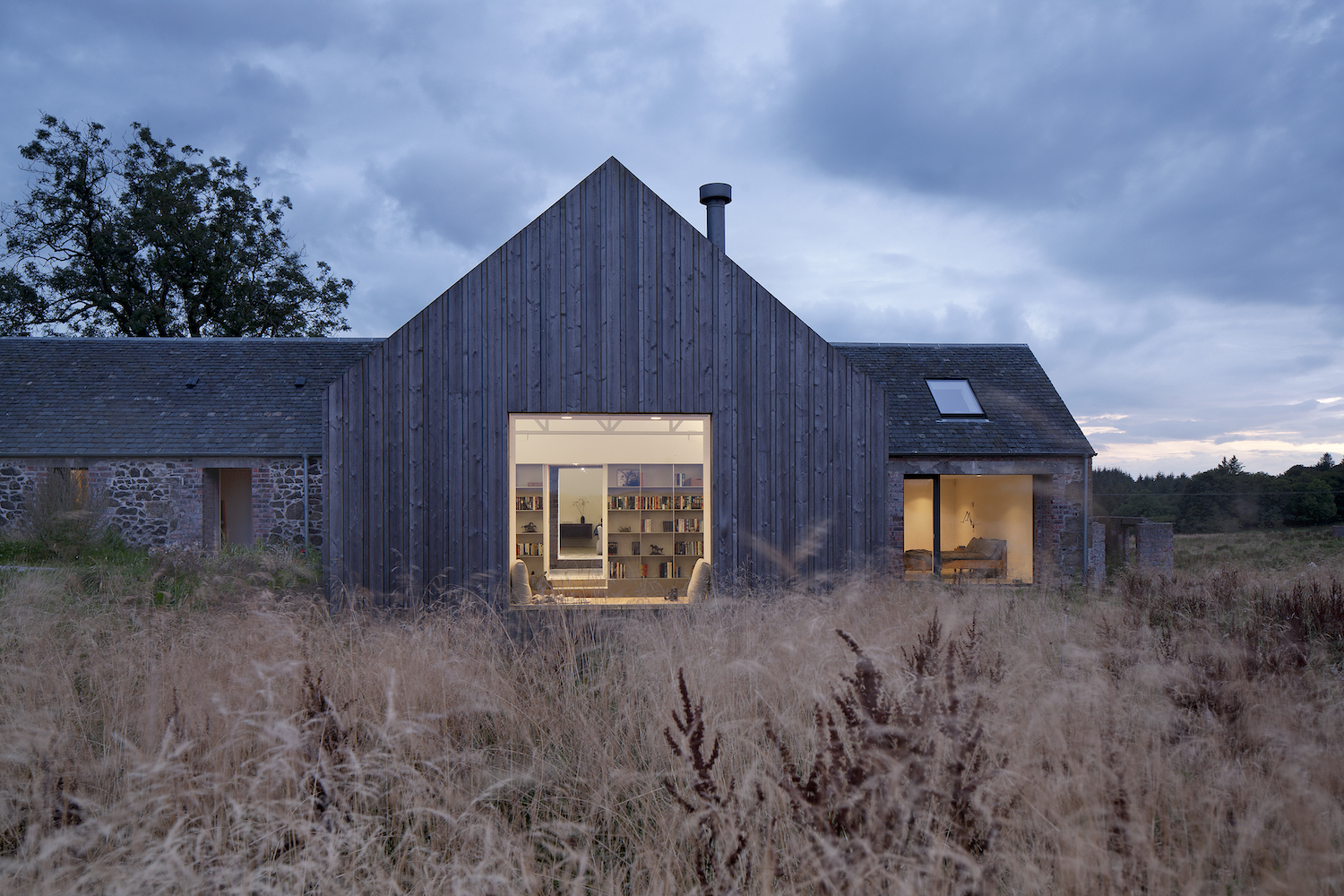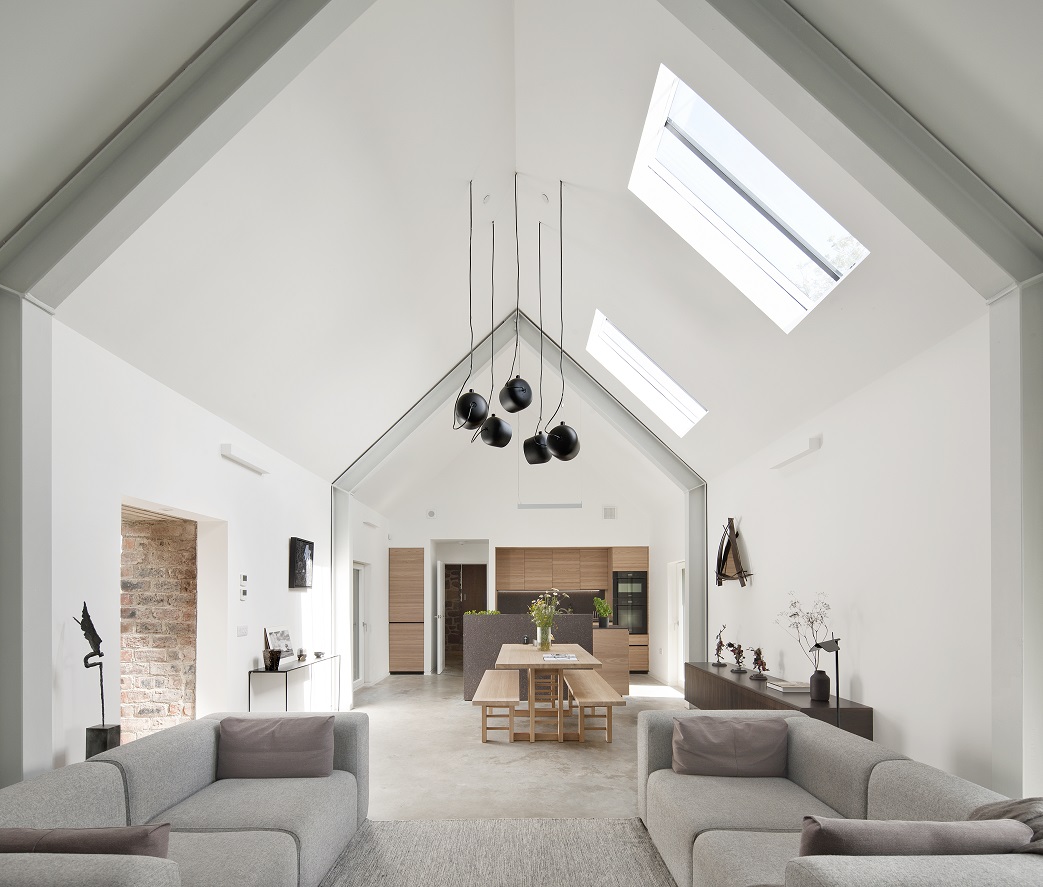House set within a ruin named Scotland’s new building of the year

Cuddymoss (Image credit: David Barbour)
A ‘building within a ruin’ in North Ayrshire designed by Ann Nisbet Studio has been named today as the winner of the Andrew Doolan Best Building in Scotland Award by the Royal Incorporation of Architects in Scotland (RIAS).
Cuddymoss is the first one-off house to win the RIAS Doolan Award since its inception in 2002.
At Cuddymoss, Ann Nisbet Studio has made new use of a ruined agricultural building in the remote Ayrshire landscape - seeking to retain as much of the dilapidated ruin as possible, and acknowledging its connections with the landscape and those who worked the land. With the client viewing his role as a custodian rather than an owner, the design avoids domesticating or over-romanticising the building, and instead preserves its existing character through a simple and restrained approach.
The intervention within the ruin sits back from the existing stone structure, creating deep reveals in the original openings, and making it difficult to discern on arrival that anything but the ruin is actually there. Designed in collaboration with the homeowner - a passionate birdwatcher and wildlife enthusiast – the practice’s approach welcomes a close connection with nature, with an old window ledge in the ruin being left untouched, to invite owls in to roost at night.
Inside, windows have been carefully positioned in such a way that the Ayrshire landscape feels as if it is entering the building. A new extension also sits alongside the ruin – matching its form and clad in silver-toned timber cladding so as to almost dissolve visually into the landscape.
The Doolan Award judges praised how the simplicity of the building concept has been realised with clarity, care and playfulness by Ann Nisbet Studio, and were impressed by the project’s deep respect for the lifespan of the ruin - from its history to possible future uses (very few alterations have been made to the ruin itself so the intervention can be removed and the ruin reused by future generations).

Cuddymoss (Image credit: David Barbour)
Cuddymoss by Ann Nisbet Studio emerged as the winner of the 2023 Andrew Doolan Best Building in Scotland Award, having overcome competition from three other shortlisted projects: Campus Central at the University of Stirling by Page\Park Architects, Hundred Acre Wood in Argyll and Bute by Denizen Works, and the Laidlaw Music Centre at the University of St Andrews by Flanagan Lawrence.
The annual RIAS Doolan Award is assessed by an expert jury who look at each project’s architectural integrity, usability and context, delivery and execution, and sustainability. The 2023 RIAS Doolan Award jury was chaired by Tracy Meller (senior partner, RSHP) and also included Ellie Stathaki (architecture editor, Wallpaper) and Chris Stewart (president, Royal Incorporation of Architects in Scotland).
All types of building are eligible for the award, which is named in memory of its founder and patron, the architect/developer Andrew Doolan, who died in 2004. The architects of the winning building receive a £10,000 cash prize, making the Doolan Award one of the most significant architecture awards in the world. The award would not exist without Andy Doolan’s extraordinary generosity and vision, and his family have kindly continued their support. The Scottish Government also generously supports the award.
RIAS President Chris Stewart PRIAS said: “Much of Scotland’s best architecture can be seen in one-off homes, and it was therefore long overdue for a newly-designed house to be named winner of the RIAS Doolan Award.
“Cuddymoss is an outstanding winner – combining Ann Nisbet Studio’s clear concept and design rigour with the client’s deep sense of responsibility to the building and its surrounding landscape. The result is a beautiful building that works extremely well as a home, and is deeply respectful of the original building’s character, heritage and setting.”





















